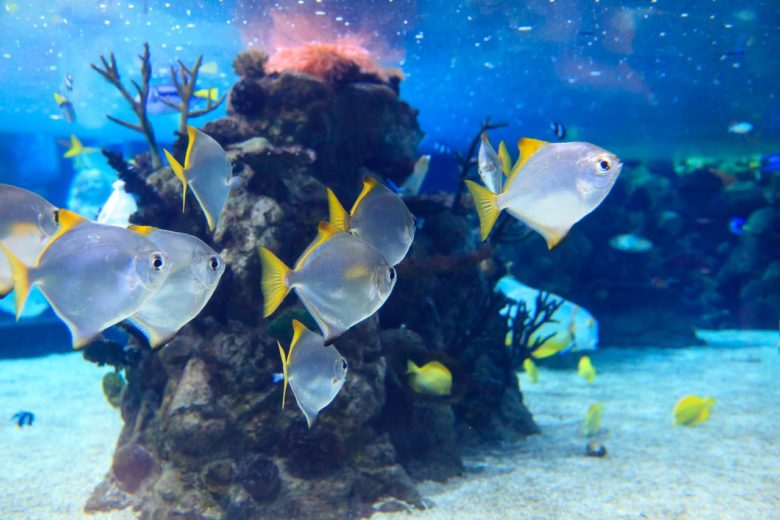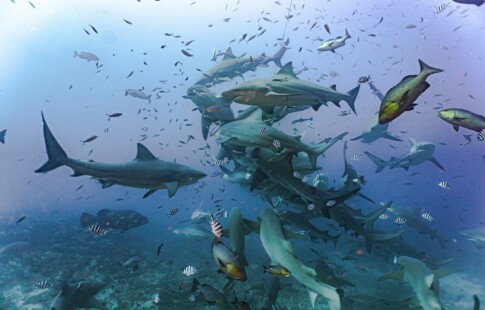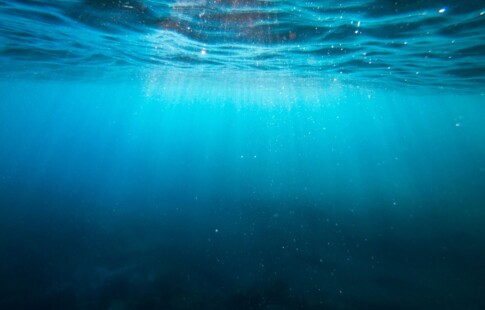
How Coral Bleaching Is Changing Marine Life Behavior
We are reader-supported. When you buy through links on our site, we may earn affiliate commission.
An aquatic ecosystem is like a scale, delicately balanced, and even a small addition or subtraction can make it tip. There are many examples of these disturbances, like invasive species, natural disasters and resource exploitation. However, of all the threats to marine life, coral bleaching is one of the most disruptive.
Bleaching is the stress response of corals under environmental pressure, caused by freshwater inflows, tropical cyclones and anthropogenic pollution. The most significant contributor to bleaching, however, is climate change. The consequences of global warming on the ocean’s pH levels and temperature can be devastating.
As the ocean absorbs high amounts of carbon dioxide, corals expel their zooxanthellae, the algae that live in their tissues. This gives them a white, faded look, hence the “bleach” in coral bleaching. That said, the issue is more than superficial, and the implications of this phenomenon are far-reaching.
We’ll examine those repercussions in greater detail, exploring the effect of coral bleaching on the behavior of marine life.
Effect of Coral Bleaching on Fish
Researchers from Lancaster University and collaborating organizations published a study in Nature Climate Change that assessed the behavior of butterflyfish, a species considered a sensitive indicator of reef health. Spending more than 600 hours underwater over a two-year period, the researchers collected data on 17 reefs across the central Indo-Pacific in the Philippines, Indonesia, Japan and Christmas Island. What they found was curious.
Dr. Sally Keith, leader of the expedition, said, “We observed that aggressive behavior had decreased in butterflyfish by an average of two thirds, with the biggest drops where bleaching had killed off the most coral.” She then went on to explain that the fish weren’t receiving enough sustenance. Since the most nutritious coral was also the most susceptible to bleaching, their diet was no longer adequate to sustain the same level of energy.
After recording 5259 encounters between individuals of 38 butterflyfish species, Dr. Kieth is confident in her conclusion that coral bleaching is the cause behind the lethargy. Though the overall population of butterflyfish didn’t see a substantial decline following the bleaching event, the behavioral changes are disconcerting for several reasons. While this type of flexibility is conducive to short-term survival, it can lead to problems later on if the disturbance endures.
So, how frequently do these bleaching events happen, and what are their effects beyond marine life?
Coral bleaching events have increased at a rapid pace in the last 30 years, occurring five times more often. A mass bleaching event in 2016 killed an estimated 30 percent of coral on Australia’s Great Barrier Reef. This speaks to the severity of the crisis and the need for immediate action on the part of policymakers. That said, climate change is not so simple to reverse, and the consequences are troubling.
Consequences of Coral Bleaching
According to Dr. Kieth’s study, reduced aggression has the potential to break down territories among butterflyfish. Typically, a mated pair would defend their claimed piece of coral. As individuals of the species extend themselves further in search of resources, aggressive defense is no longer a realistic option, and this could lead to a transition from interference to exploitative competition.
While behavioral changes in a single species don’t seem significant at first glance, it’s essential to remember the metaphor of the scale. An ecosystem is delicately balanced, and even a small addition or subtraction can make it tip. In this particular set of circumstances, the nutritional deficit among butterflyfish leads to a change in their energy. As they adapt, the larger ecological community, in turn, has to rearrange itself around them.
Natural predators of the reef butterflyfish like snappers, groupers and moray eels are also affected. By extension, the natural predators of these predators are affected, as well. A weak link on the food chain can cause a decline in the population of other species that depend on that link for their survival. The disappearance of fish individuals and species on coral reefs is already happening. Unfortunately, according to researchers, it isn’t likely to get better.
Scientists warn that even if it were possible to halt climate change now, the oceans would still lose 90 percent of their coral reefs by 2050. With a mass bleaching event happening about once every six years, the ecosystems that rely on these reefs don’t have time to recover. The damage gradually accumulates until there’s little left to save. It isn’t only bad news, however, as some groups have developed technology to help with monitoring and assessment.
Seasonal forecasts from special systems can detect anomalous sea surface temperature — otherwise known as SST — several months in advance. These kinds of proactive management measures have changed the way organizations handle coral bleaching. Though it’s a small victory, it’s an important step forward in the fight to preserve the Great Barrier Reef, the Coral Sea and similar ecosystems susceptible to global warming.
The Necessity of Environmental Conservation
Dr. Keith and her international team of researchers have added dimensionality to our understanding of climate change. They’ve shown the subtle way in which rising temperatures can affect marine life, and through detailing the direct consequences of mass bleaching on the behavior of butterflyfish, their study has provided further evidence for the necessity of environmental conservation.
Moving forward, the collected data will prove valuable in the deciding how these conservation efforts take shape.
Share on
Like what you read? Join other Environment.co readers!
Get the latest updates on our planet by subscribing to the Environment.co newsletter!
About the author

Jane Marsh
Starting from an early age, Jane Marsh loved all animals and became a budding environmentalist. Now, Jane works as the Editor-in-Chief of Environment.co where she covers topics related to climate policy, renewable energy, the food industry, and more.





